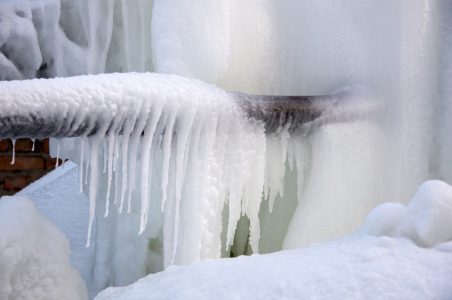Shielding Pipes from Freezing Issues: Critical Tips
Shielding Pipes from Freezing Issues: Critical Tips
Blog Article
The article which follows in relation to Helpful Tips to Prevent Frozen Pipes this Winter is truly attention-grabbing. Check it out yourself and decide what you think of it.

Winter can damage your pipes, especially by freezing pipelines. Here's how to avoid it from happening and what to do if it does.
Intro
As temperatures decrease, the risk of icy pipes rises, potentially causing pricey repair services and water damages. Recognizing how to avoid icy pipelines is vital for home owners in chilly climates.
Avoidance Tips
Shielding vulnerable pipelines
Wrap pipelines in insulation sleeves or make use of heat tape to safeguard them from freezing temperatures. Focus on pipelines in unheated or outside locations of the home.
Home heating strategies
Keep indoor spaces appropriately heated, specifically areas with pipes. Open closet doors to permit warm air to flow around pipes under sinks.
Just how to identify icy pipes
Try to find lowered water flow from taps, unusual smells or noises from pipes, and noticeable frost on exposed pipes.
Long-Term Solutions
Architectural modifications
Consider rerouting pipes far from exterior walls or unheated locations. Add additional insulation to attic rooms, basements, and crawl spaces.
Upgrading insulation
Invest in top notch insulation for pipelines, attics, and walls. Proper insulation helps keep consistent temperatures and decreases the threat of icy pipelines.
Shielding Exterior Pipes
Garden tubes and exterior faucets
Disconnect and drain pipes garden pipes prior to wintertime. Install frost-proof spigots or cover exterior faucets with insulated caps.
Recognizing Frozen Pipelines
What creates pipes to ice up?
Pipes ice up when subjected to temperatures below 32 ° F (0 ° C) for expanded durations. As water inside the pipelines freezes, it increases, taxing the pipe wall surfaces and potentially causing them to rupture.
Risks and problems
Icy pipes can bring about water system disturbances, building damage, and expensive repair services. Ruptured pipelines can flooding homes and cause extensive architectural damages.
Indications of Frozen Pipeline
Recognizing frozen pipes early can stop them from rupturing.
What to Do If Your Pipes Freeze
Immediate activities to take
If you believe icy pipes, maintain faucets open to soothe pressure as the ice thaws. Utilize a hairdryer or towels taken in warm water to thaw pipes gradually.
Conclusion
Avoiding icy pipelines requires proactive measures and fast feedbacks. By recognizing the reasons, indicators, and safety nets, home owners can shield their pipes during cold weather.
6 Proven Ways to Prevent Frozen Pipes and Protect Your Home
Disconnect and Drain Garden Hoses
Before winter arrives, start by disconnecting your garden hoses and draining any remaining water. Close the shut-off valves that supply outdoor hose bibs and leave the outdoor faucet open to allow any residual water to drain. For extra protection, consider using faucet covers throughout the colder months. It’s also important to drain water from any sprinkler supply lines following the manufacturer’s directions.
Insulate Exposed Pipes
Insulating your pipes is an effective way to prevent freezing. Pipe insulation is readily available at home improvement stores and is relatively inexpensive. Pay close attention to pipes in unheated areas such as the attic, basement, crawl spaces, or garage. Apply foam insulation generously to create a buffer against the cold. You can also wrap your pipes in heat tape or thermostat-controlled heat cables for added warmth.
Seal Air Leaks
Inspect your home for any cracks or openings that could let in cold air. Seal any holes around the piping in interior or exterior walls, as well as the sill plates where your home rests on its foundation. Additionally, make sure to keep your garage door closed unless you’re entering or exiting. Leaving it open creates a significant air leak that can lead to frozen pipes.
Allow Warm Air Circulation
During cold snaps, it’s essential to allow warm air to circulate evenly throughout your home. Leave interior doors ajar to promote better airflow. Open kitchen and bathroom cabinets to help distribute heat consistently around the rooms. If you have small children or pets, be sure to remove any household chemicals or potentially harmful cleaners from open cabinets for safety.
Let Faucets Drip
A small trickle of water can make a big difference in preventing ice formation inside your pipes. When temperatures drop significantly, start a drip of water from all faucets served by exposed pipes. This continuous flow helps prevent the water from freezing. Additionally, running a few faucets slightly can relieve pressure inside the pipes, reducing the chances of a rupture if the water inside does freeze.
https://choateshvac.com/6-proven-ways-to-prevent-frozen-pipes-and-protect-your-home/

I'm just very serious about How to prepare your home plumbing for winter weather and I really hope you enjoyed reading our entry. Those who enjoyed reading our article plz consider to pass it around. Bless you for being here. Come back soon.
Contact Us Now Report this page